Buying and maintaining
your first car
Thesis Project

Project background
Tackling the often challenging journey of buying a car for the first time, this project aims to aid first-timers car buyers and new owners, particularly in Ontario. First-time buyers face a steep learning curve, from understanding financing options to evaluating car features and managing the complexities of ownership. With increasing concerns around financial transparency, safety, and information reliability, the process can be overwhelming, especially for young buyers or new immigrants without established networks for support.
Team and role
This project was a solo effort where I led all stages of design, from research and ideation through prototyping and testing. To enrich the process, I participated in collaborative sessions with classmates and fellow designers, allowing for constructive critique and fresh perspectives that helped refine key aspects of the project. While all decisions and outputs were ultimately my own, these sessions provided valuable feedback that influenced the design direction.
Challenges and objectives
The car buying and owning experiences are complicated and often overwhelming. This presented me with a set of challenges & goals that were present all throughout research and design:
1. Managing Information Overload
The goal was to take what is a grand and daunting journey, and making it as transparent and user friendly as possible.
2. Enhanced Usability & Flexibility
Focusing on delivering an experience that maximizes user capabilities, and adapts to various unique experiences.
3. Promoting Action
Providing clear roadmaps to the experience, and encouraging users to take action during their transition into ownership.
Project outcomes



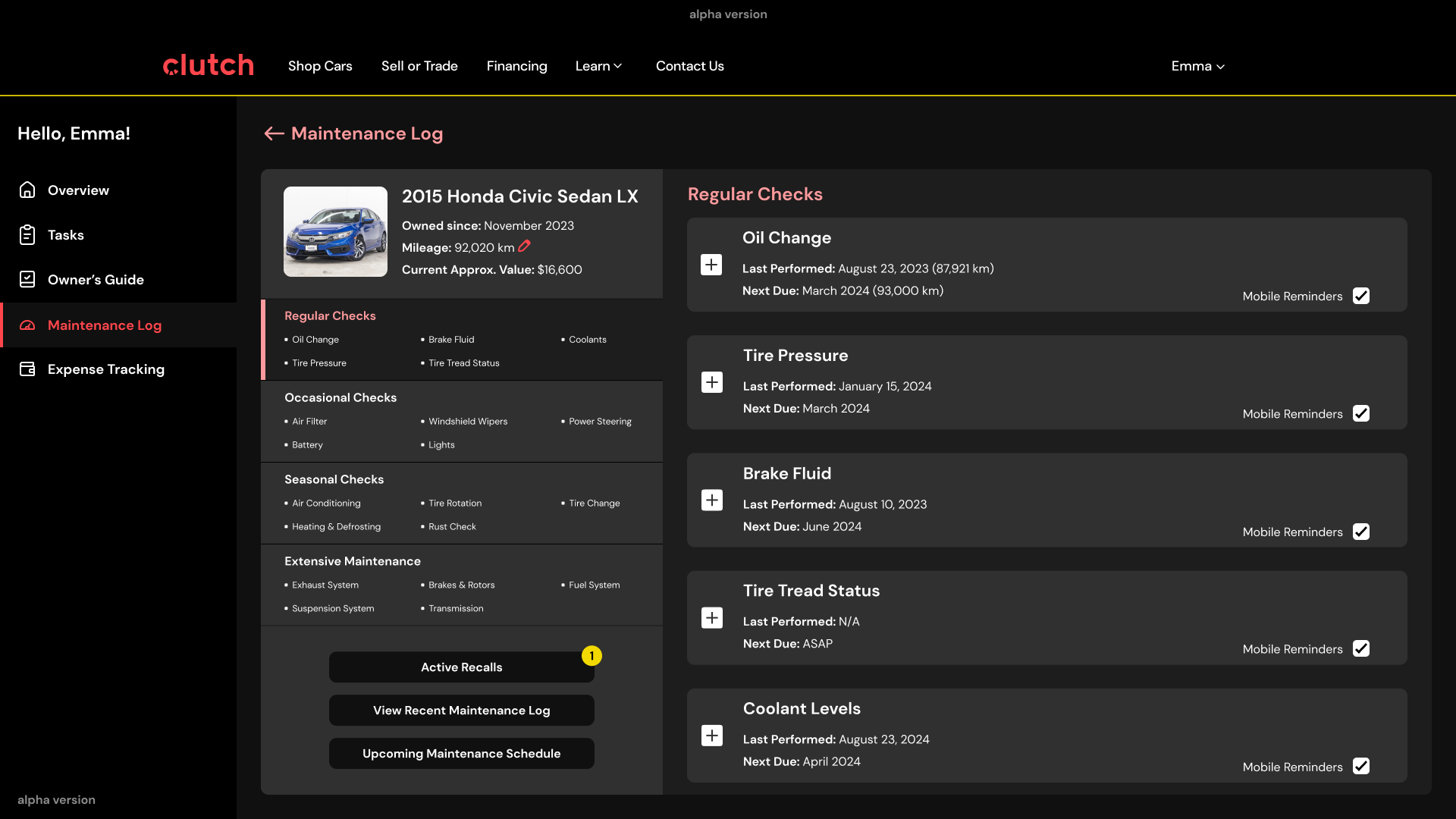
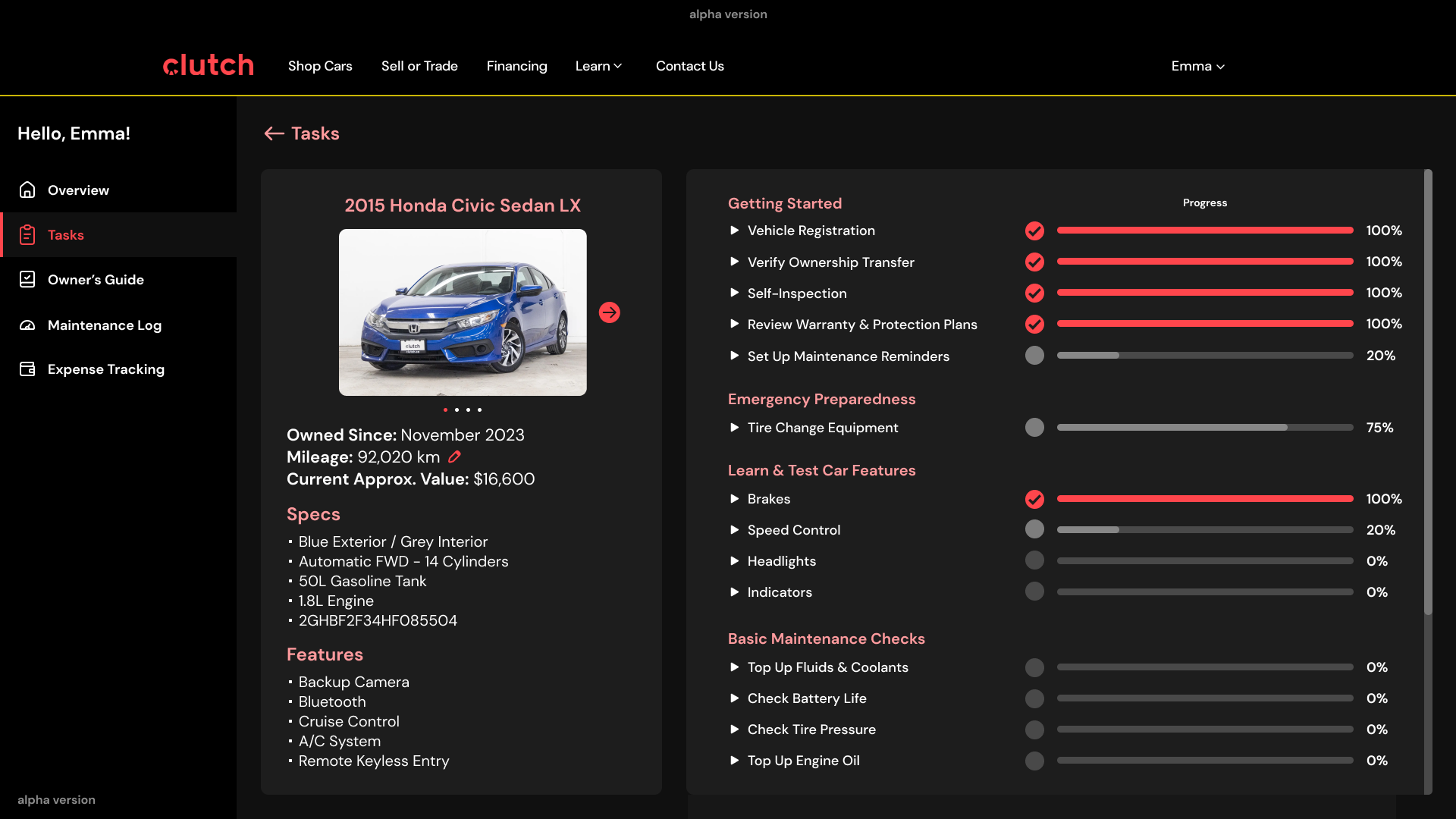
Behind the design
Achieving these final results was a journey shaped by continuous research, user insights, and iterative design. From understanding first-time car buyers' challenges to refining solutions that would truly meet their needs, each step brought me closer to the final design. In the following sections, I'll walk through the key phases that informed my approach and brought this concept to life.
Phase I - User research
The first phase entirely focused on performing user research, where I planned and facilitated scheduled sessions to learn more about this problem space.
Phase II - Design implementation
Switching gears to implementation, the second phase takes the insights I gathered from users and progresses through various stages of design and iteration, in order to create an applicable solution to the problem.

Laying the foundation
To contextualize this problem space further, and develop a strong foundation to begin performing user research, I performed a literature review examining what is currently known about this landscape.
My findings allowed me to begin developing frameworks of the current car buying/owning experience, and visualizing the value exchange in the ecosystem that leads to our users getting their first car.
Three main user groups were identified:
1. Aspiring first-time car owners
2. New first-time car owners
3. Canadian newcomers in Ontario
Understanding the user

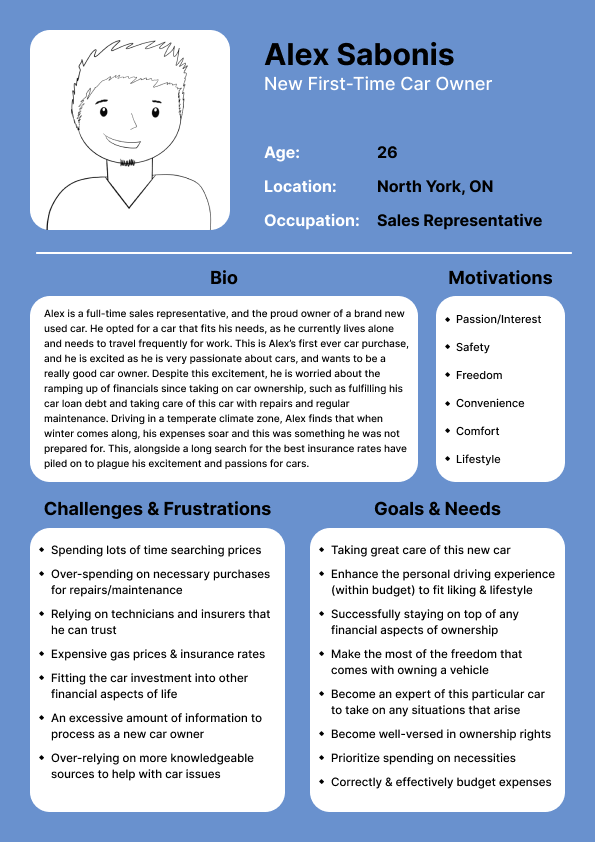

Exploring the landscape further
My secondary research took me through phases of exploration, learning about all sorts of products and tools in this space that users are currently using. By understanding existing constraints and risks, as well as beginning to note down project-wide mitigation strategies, the stage was being set for me to begin performing user research.


This project’s user research involved two methods:
1. Interviews (13 participants)
2. Focus Group (4 participants)
The aim of this user research is to uncover key insights to what makes buying a car here in Ontario tricky, as well as the pain points that come with taking on car ownership in the short or long term.
1. Interviews (13 participants)
2. Focus Group (4 participants)
The aim of this user research is to uncover key insights to what makes buying a car here in Ontario tricky, as well as the pain points that come with taking on car ownership in the short or long term.
Outlining the journey
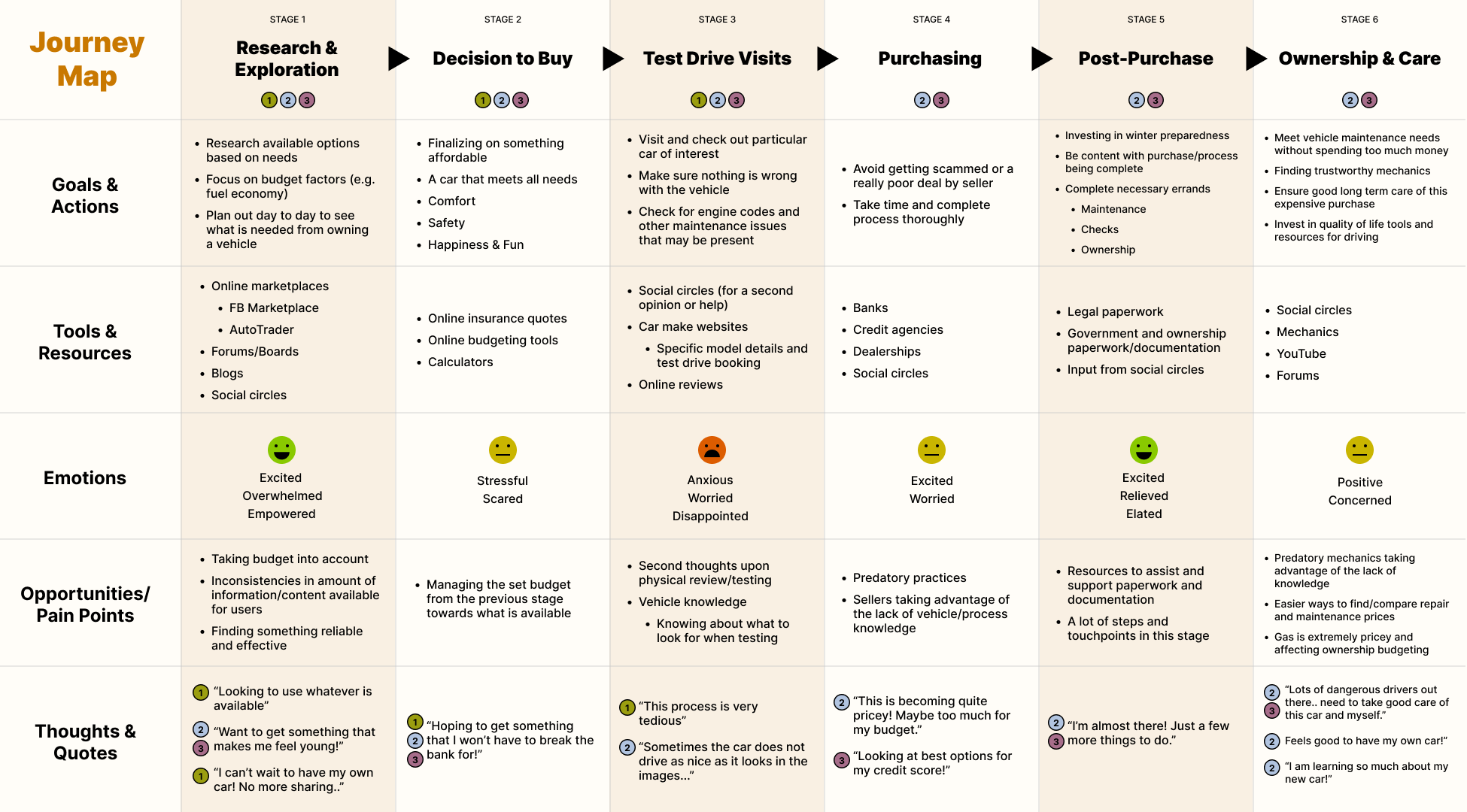

Highlighted opportunities
Performing user research highlighted the following areas:
-> The importance of financial/maintenance management when it comes to their owned vehicle
-> A personalized and simpler experience
-> Access to key resources/knowledge to make this experience more comfortable
Co-creation & ideation
We were given the opportunity to re-group as a cohort and ideate together, trying to come up with various solution directions following what we learned in research.
Two activities were planned and facilitated with a couple of my colleagues, focusing on developing an expansive concepts that aims to tackle the problem areas discovered in the research stage.



︎︎︎ ︎︎︎ ︎︎︎ Transition to Phase II ︎︎︎ ︎︎︎ ︎︎︎
Finalizing this phase of the project, the ideation moves it into the second stage. This is going to focus on the implementation of the design, and curating the solutions that aim to make this a better experience for young and new drivers in Ontario. This stage involves sketching and low-fidelity wireframing potential concepts that were developed in the previous early ideation phase.
Visualizing concepts
A wide range of sketches were done on the idea I decided on moving forward with, which in this case, is an all-encompassing dashboard to help first-time car buyers settle into their ownership experience.
My progress up until this stage set the foundation to apply my product to an existing service that exists here in Ontario. The implementations from this point on will be adapted into Clutch, an online used car dealership based in Canada.





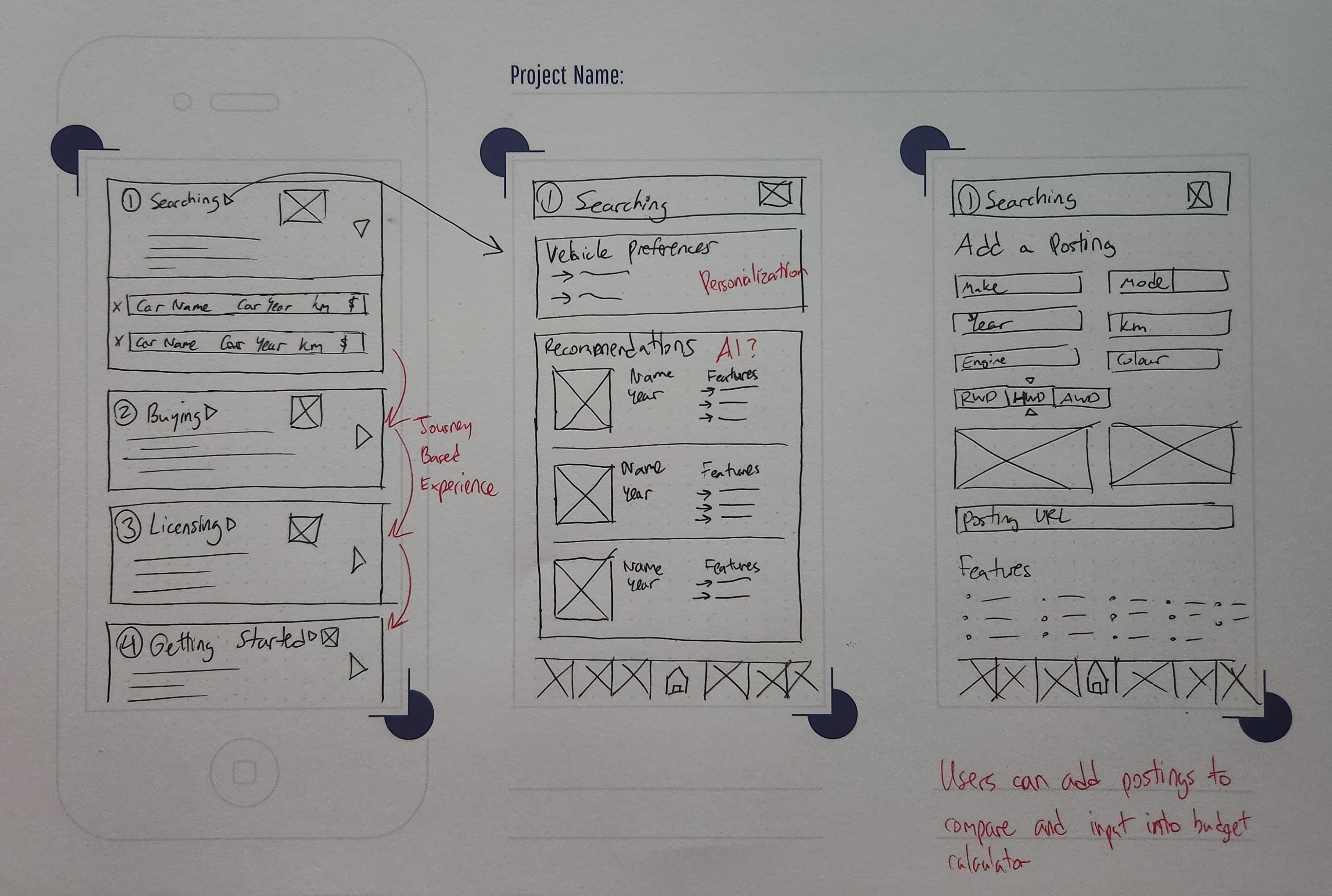






Adding structure to concepts
Using Figma, the sketches were brought to the next level through a wireframing process. These were presented with my colleagues and professors in a review session, before touching up areas and turning the screens into a working prototype ready for usability testing.
Putting it to the test
The wireframe prototype was put through a round of usability testing, with five participants who were appropriately screened prior to their recruitment.
These sessions helped find any pressing usability issues within the proposed design, as well as help fine tune this concept prior to the application of the creative style.
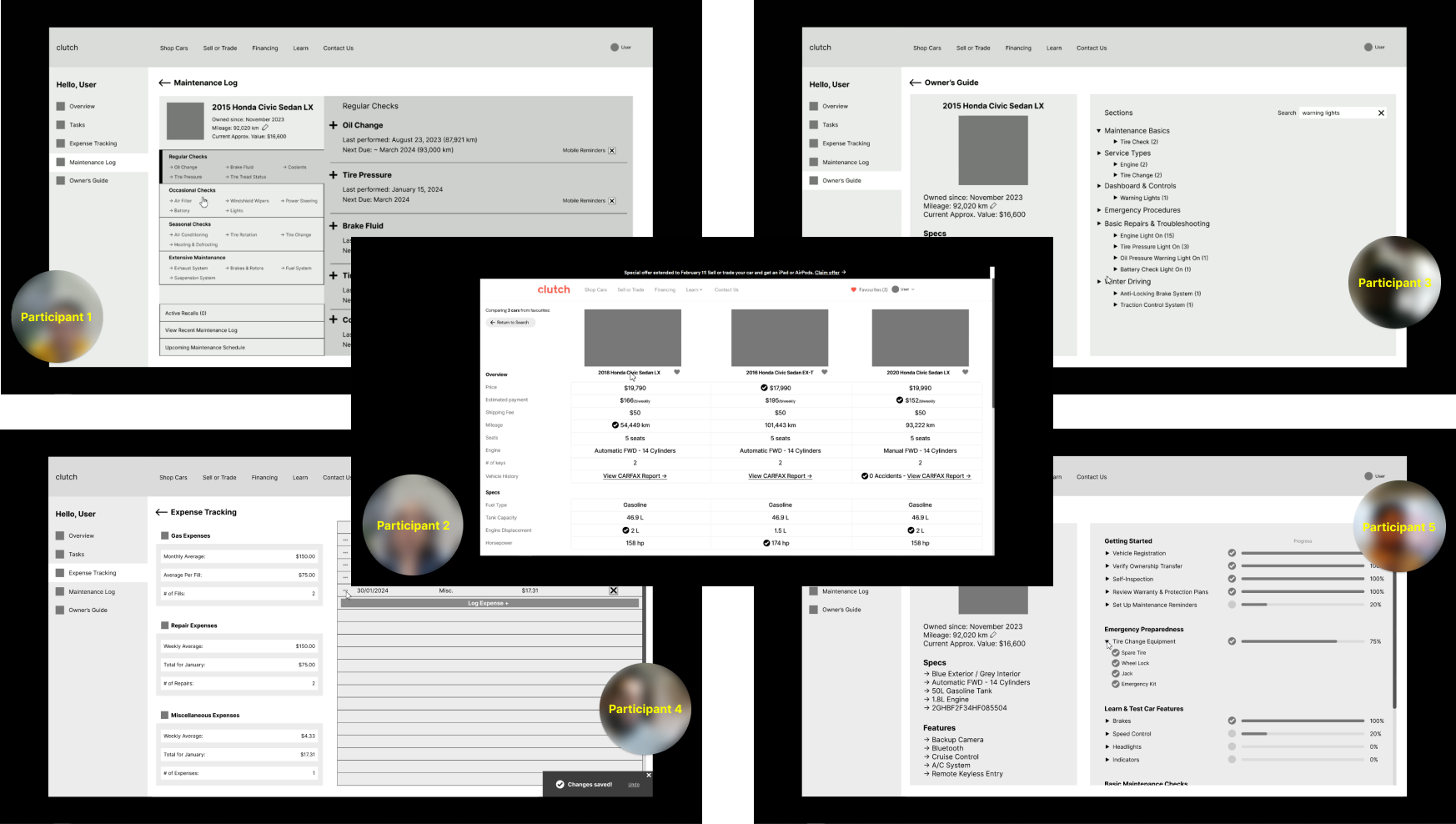
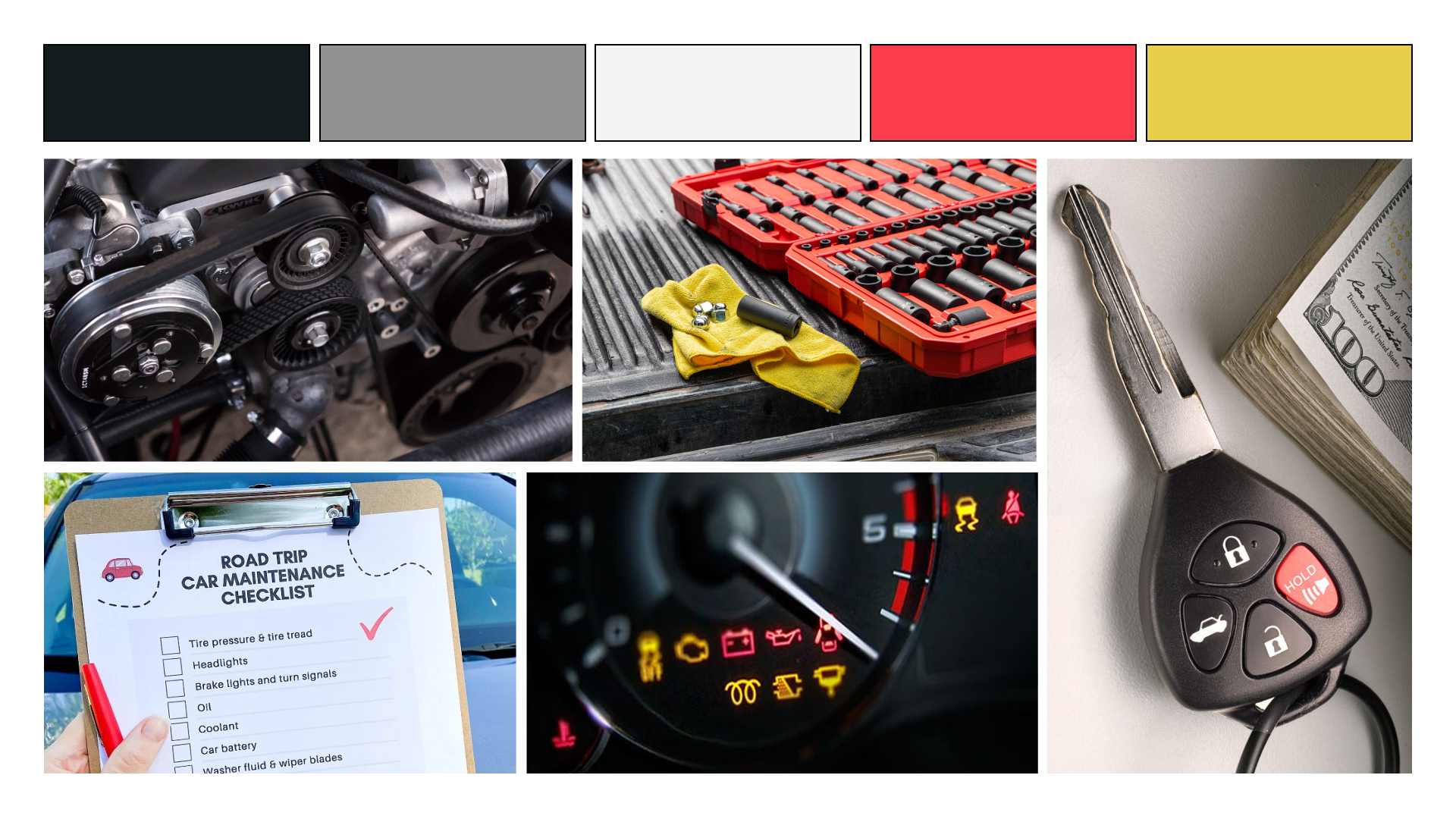
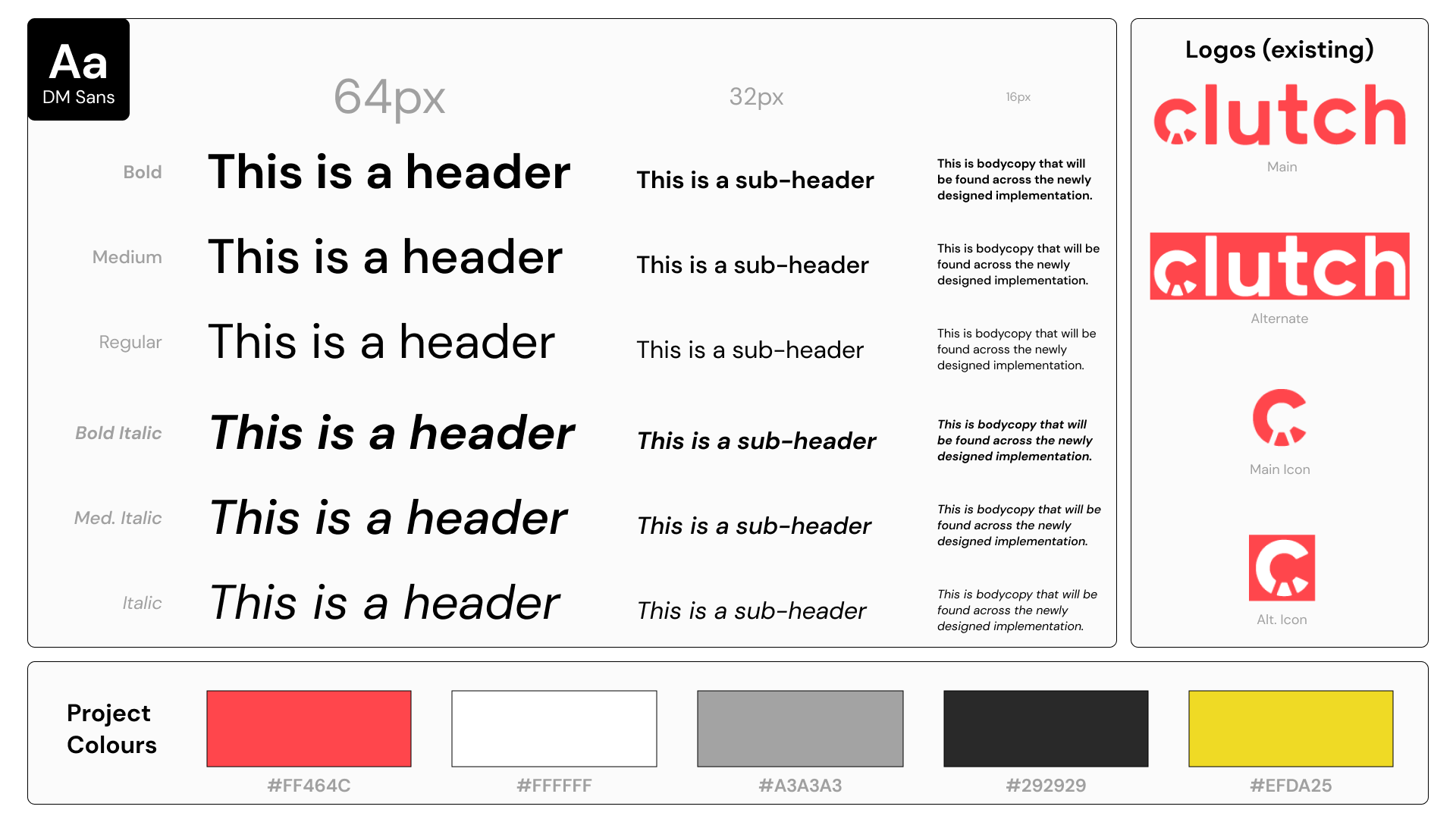

Finalizing a visual identity
Before turning the finalized wireframes into high fidelity screens, a creative strategy needed to be produced in order to effectively convey what the visual style will be, as well as how it works with what Clutch currently has.
My proposition is to switch it up very slightly, keeping some of the core elements used by Clutch but styling it to be noticeably different, representing the other side of the car buying journey that these new drivers will experience.
Bringing it all together
Using the solidifed creative strategy, the visual style was applied to the wireframes, alongside any necessary changes to the interactions. The proposed dashboard, the additions to the buying journey and the informative pamphlets all work together both visually and through functionality to enhance this experience for first time car buyers.
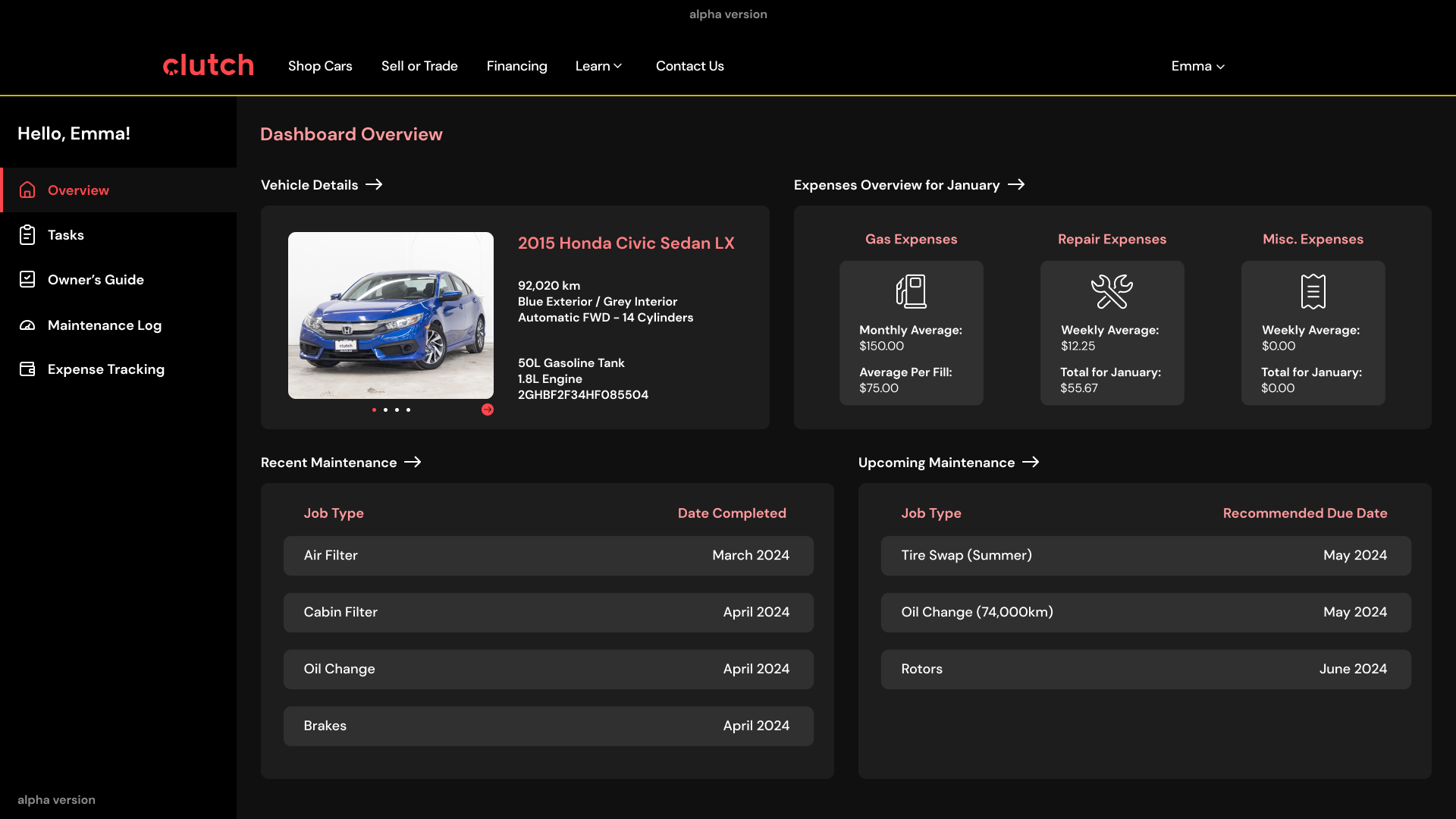






Takeaways
This thesis project was an opportunity for us to apply everything we have learned throughout the program. From performing user research, to ideation, and finally setting up a foundation to bring this project to life, I feel that I was able to learn so much from this experience on top of it all. The magnitude of this project helped me understand various aspects of a project such as feasibilty, scale and incorporating design thinking into both current and future releases.
